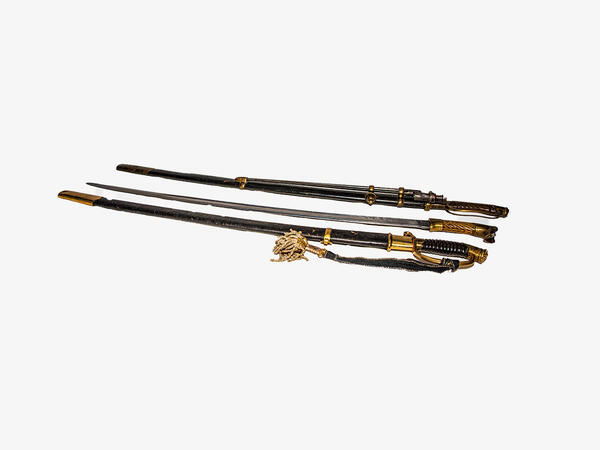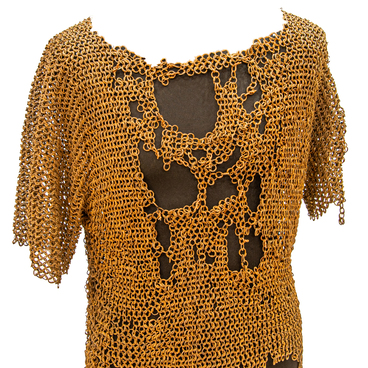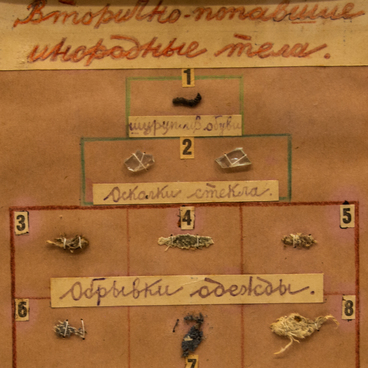In Russia, the cavalry sword was part of the armament of all cavalry units, artillery servants, and the officer corps. In 1881, the army had its armaments modernized under the leadership of Lieutenant-General Alexander Gorlov. As a result, for all the branches of the armed forces, there was a new single model of weapons approved — dragoon and Cossack cavalry swords model 1881.
The new cavalry swords were created by analogy with the Caucasian blade, with a long, curved blade. In the East, in Asia Minor, among the Caucasian peoples and Russian Cossacks, the cavalry sword was considered a weapon with ‘extraordinary advantages when cutting.’
According to its properties, the cavalry sword blade was intended for a slashing blow in cavalry attacks, less often — for a stabbing blow. The cavalry sword blade was sheathed. The specific distinction between sabers and cavalry swords was the leather-covered sheath. One or two rings were attached to them for the harness straps. The cavalry sword was hung in the Caucasian style with the blade back and was more often worn on the shoulder strap, and the saber was worn on the waist strap.
There are two cavalry swords model 1881 in the museum: the dragoon officer’s cavalry sword and the Cossack cavalry sword for the lower ranks. Both of them were made at the Zlatoust Weapons Factory. This factory was one of the largest weapons centers in Russia in the second half of the 19th-early 20th century, almost all combat weapons for the army and navy were produced here.
The Cossack cavalry sword model 1881 for the lower ranks was used in all Cossack units after the reform, except for the Caucasian ones. Before that, the lower ranks of the 16th and 17th Dragoon regiments used the Asian model weapons of 1834 (it was returned to service a few years later). Before the reform both the Irkutsk and Krasnoyarsk Cossack “sotnya” (Cossack cavalry squadron) fought with the 1838 model cavalry sword.
The Dragoon officer’s cavalry sword model 1881 was used instead of cavalry and dragoon sabers and cuirassier broadswords. In 1882, some Guards cavalry units still carried ‘old’ weapons in peacetime with a ceremonial uniform. However, later officers and generals who started to use a new type of weapons began to wear dragoon officer’s cavalry swords model 1881/1909 with a full-dress uniform, too. Military officers used them after the October revolution of 1917.
The new cavalry swords were created by analogy with the Caucasian blade, with a long, curved blade. In the East, in Asia Minor, among the Caucasian peoples and Russian Cossacks, the cavalry sword was considered a weapon with ‘extraordinary advantages when cutting.’
According to its properties, the cavalry sword blade was intended for a slashing blow in cavalry attacks, less often — for a stabbing blow. The cavalry sword blade was sheathed. The specific distinction between sabers and cavalry swords was the leather-covered sheath. One or two rings were attached to them for the harness straps. The cavalry sword was hung in the Caucasian style with the blade back and was more often worn on the shoulder strap, and the saber was worn on the waist strap.
There are two cavalry swords model 1881 in the museum: the dragoon officer’s cavalry sword and the Cossack cavalry sword for the lower ranks. Both of them were made at the Zlatoust Weapons Factory. This factory was one of the largest weapons centers in Russia in the second half of the 19th-early 20th century, almost all combat weapons for the army and navy were produced here.
The Cossack cavalry sword model 1881 for the lower ranks was used in all Cossack units after the reform, except for the Caucasian ones. Before that, the lower ranks of the 16th and 17th Dragoon regiments used the Asian model weapons of 1834 (it was returned to service a few years later). Before the reform both the Irkutsk and Krasnoyarsk Cossack “sotnya” (Cossack cavalry squadron) fought with the 1838 model cavalry sword.
The Dragoon officer’s cavalry sword model 1881 was used instead of cavalry and dragoon sabers and cuirassier broadswords. In 1882, some Guards cavalry units still carried ‘old’ weapons in peacetime with a ceremonial uniform. However, later officers and generals who started to use a new type of weapons began to wear dragoon officer’s cavalry swords model 1881/1909 with a full-dress uniform, too. Military officers used them after the October revolution of 1917.



